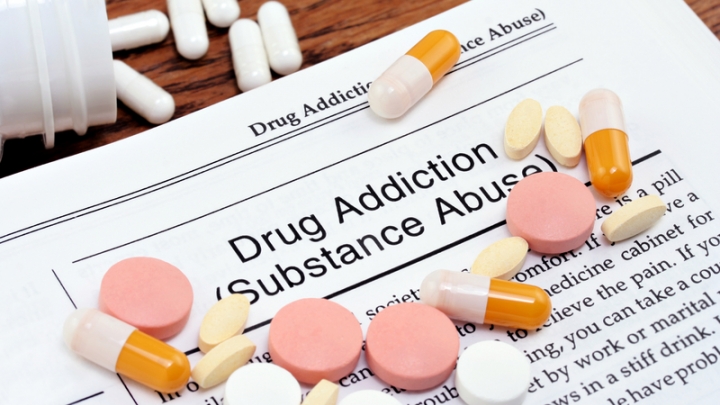Forgot your password?
Click Here to reset your password.
Forgot your password?
Click Here to reset your password.
Forgot your password?
Click Here to reset your password.

Drug addiction, also called substance use disorder, is a disease that affects a person's brain and behavior and leads to an inability to control the use of a legal or illegal drug or medication. Substances such as alcohol, marijuana and nicotine also are considered drugs. When you're addicted, you may continue using the drug despite the harm it causes.
Drug addiction can start with experimental use of a recreational drug in social situations, and, for some people, the drug use becomes more frequent. For others, particularly with opioids, drug addiction begins with exposure to prescribed medications, or receiving medications from a friend or relative who has been prescribed the medication.
The risk of addiction and how fast you become addicted varies by drug. Some drugs, such as opioid painkillers, have a higher risk and cause addiction more quickly than others.
As time passes, you may need larger doses of the drug to get high. Soon you may need the drug just to feel good. As your drug use increases, you may find that it's increasingly difficult to go without the drug. Attempts to stop drug use may cause intense cravings and make you feel physically ill (withdrawal symptoms).
You may need help from your doctor, family, friends, support groups or an organized treatment program to overcome your drug addiction and stay drug-free.
Drug addiction symptoms or behaviors include, among others:
Recognizing unhealthy drug use in family members
Sometimes it's difficult to distinguish normal teenage moodiness or angst from signs of drug use. Possible indications that your teenager or other family member is using drugs include:
Recognizing signs of drug use or intoxication
Signs and symptoms of drug use or intoxication may vary, depending on the type of drug. Below you'll find several examples.
Marijuana, hashish and other cannabis-containing substances
People use cannabis by smoking, eating or inhaling a vaporized form of the drug. Cannabis often precedes or is used along with other substances, such as alcohol or illegal drugs, and is often the first drug tried.
Signs and symptoms of recent use can include:
Long-term (chronic) use is often associated with:
K2, Spice and bath salts
Two groups of synthetic drugs — synthetic cannabinoids and substituted or synthetic cathinones — are illegal in most states. The effects of these drugs can be dangerous and unpredictable, as there is no quality control and some ingredients may not be known.
Synthetic cannabinoids, also called K2 or Spice, are sprayed on dried herbs and then smoked, but can be prepared as an herbal tea. Despite manufacturer claims, these are chemical compounds rather than "natural" or harmless products. These drugs can produce a "high" similar to marijuana and have become a popular but dangerous alternative.
Signs and symptoms of recent use can include:
Substituted cathinones, also called "bath salts," are mind-altering (psychoactive) substances similar to amphetamines such as ecstasy (MDMA) and cocaine. Packages are often labeled as other products to avoid detection.
Despite the name, these are not bath products such as Epsom salts. Substituted cathinones can be eaten, snorted, inhaled or injected and are highly addictive. These drugs can cause severe intoxication, which results in dangerous health effects or even death.
Signs and symptoms of recent use can include:
Barbiturates, benzodiazepines and hypnotics
Barbiturates, benzodiazepines and hypnotics are prescription central nervous system depressants. They're often used and misused in search for a sense of relaxation or a desire to "switch off" or forget stress-related thoughts or feelings.
Signs and symptoms of recent use can include:
Meth, cocaine and other stimulants
Stimulants include amphetamines, meth (methamphetamine), cocaine, methylphenidate (Ritalin, Concerta, others) and amphetamine-dextroamphetamine (Adderall, Adderall XR, others). They are often used and misused in search of a "high," or to boost energy, to improve performance at work or school, or to lose weight or control appetite.
Signs and symptoms of recent use can include:
Club drugs
Club drugs are commonly used at clubs, concerts and parties. Examples include ecstasy or molly (MDMA), gamma-hydroxybutyric acid (GHB), flunitrazepam (Rohypnol ― a brand used outside the U.S. ― also called roofie) and ketamine. These drugs are not all in the same category, but they share some similar effects and dangers, including long-term harmful effects.
Because GHB and flunitrazepam can cause sedation, muscle relaxation, confusion and memory loss, the potential for sexual misconduct or sexual assault is associated with the use of these drugs.
Signs and symptoms of use of club drugs can include:
Hallucinogens
Use of hallucinogens can produce different signs and symptoms, depending on the drug. The most common hallucinogens are lysergic acid diethylamide (LSD) and phencyclidine (PCP).
LSD use may cause:
PCP use may cause:
Inhalants
Signs and symptoms of inhalant use vary, depending on the substance. Some commonly inhaled substances include glue, paint thinners, correction fluid, felt tip marker fluid, gasoline, cleaning fluids and household aerosol products. Due to the toxic nature of these substances, users may develop brain damage or sudden death.
Signs and symptoms of use can include:
Opioid painkillers
Opioids are narcotic, painkilling drugs produced from opium or made synthetically. This class of drugs includes, among others, heroin, morphine, codeine, methadone and oxycodone.
Sometimes called the "opioid epidemic," addiction to opioid prescription pain medications has reached an alarming rate across the United States. Some people who've been using opioids over a long period of time may need physician-prescribed temporary or long-term drug substitution during treatment.
Signs and symptoms of narcotic use and dependence can include:
Staging an intervention
People struggling with addiction usually deny that their drug use is problematic and are reluctant to seek treatment. An intervention presents a loved one with a structured opportunity to make changes before things get even worse and can motivate someone to seek or accept help.
An intervention should be carefully planned and may be done by family and friends in consultation with a doctor or professional such as a licensed alcohol and drug counselor, or directed by an intervention professional. It involves family and friends and sometimes co-workers, clergy or others who care about the person struggling with addiction.
During the intervention, these people gather together to have a direct, heart-to-heart conversation with the person about the consequences of addiction and ask him or her to accept treatment.
Like many mental health disorders, several factors may contribute to development of drug addiction. The main factors are:
Changes in the brain
Physical addiction appears to occur when repeated use of a drug changes the way your brain feels pleasure. The addicting drug causes physical changes to some nerve cells (neurons) in your brain. Neurons use chemicals called neurotransmitters to communicate. These changes can remain long after you stop using the drug.
People of any age, sex or economic status can become addicted to a drug. Certain factors can affect the likelihood and speed of developing an addiction:
Drug use can have significant and damaging short-term and long-term effects. Taking some drugs can be particularly risky, especially if you take high doses or combine them with other drugs or alcohol. Here are some examples.
Other life-changing complications
Dependence on drugs can create a number of dangerous and damaging complications, including:

 Consultation
Consultation Book An Appointment
Book An Appointment Courier your medicine
Courier your medicine Give us a Call
Give us a Call